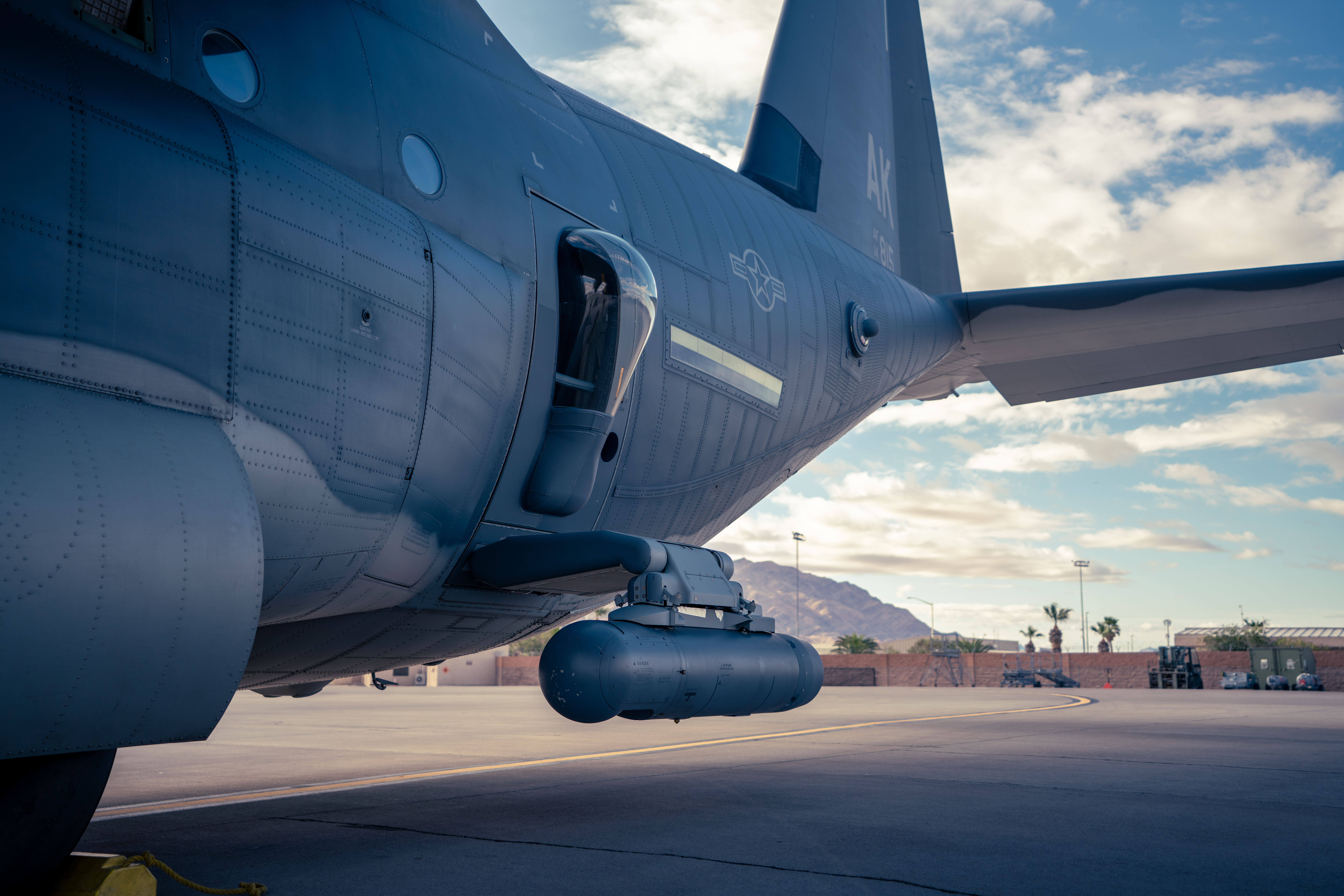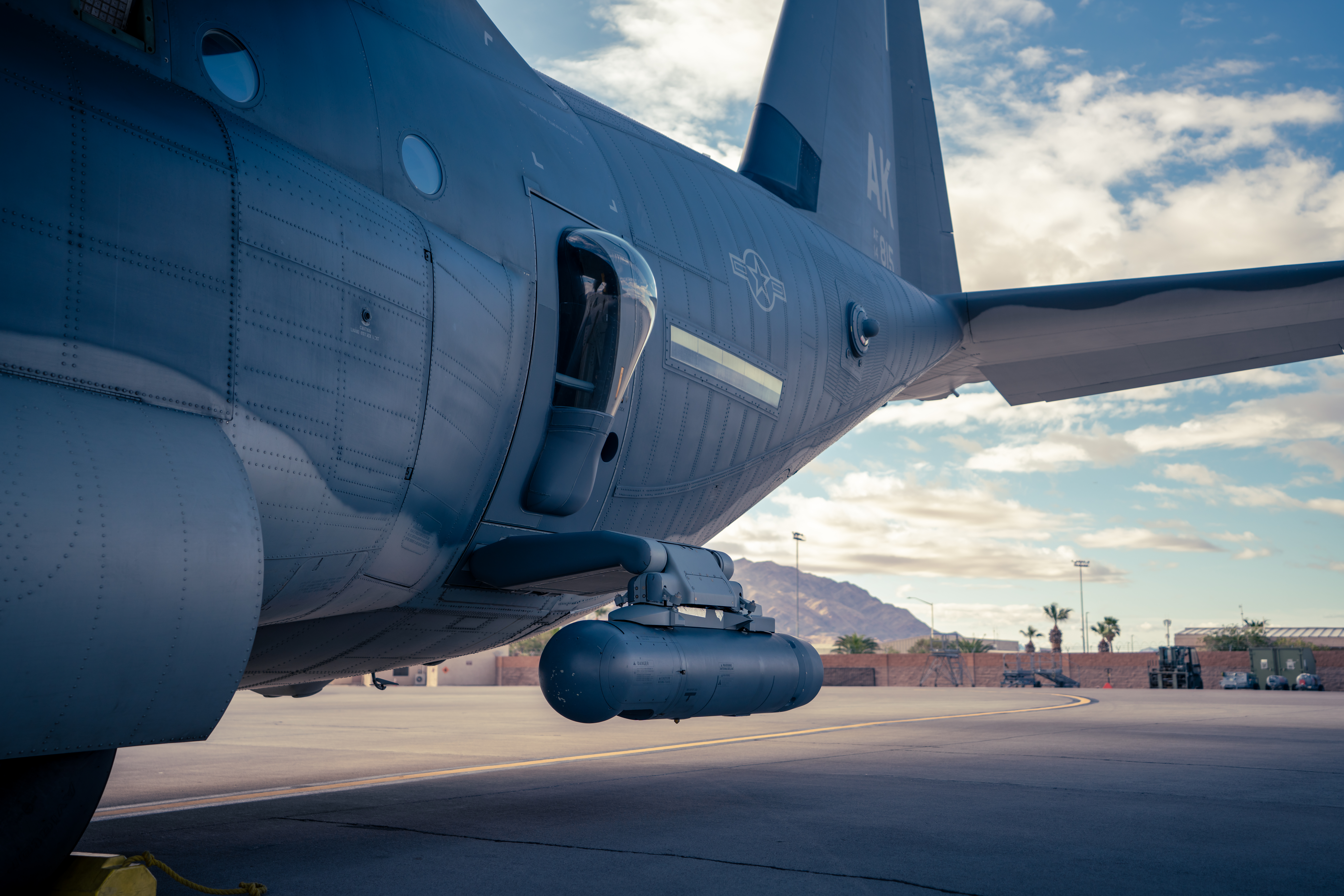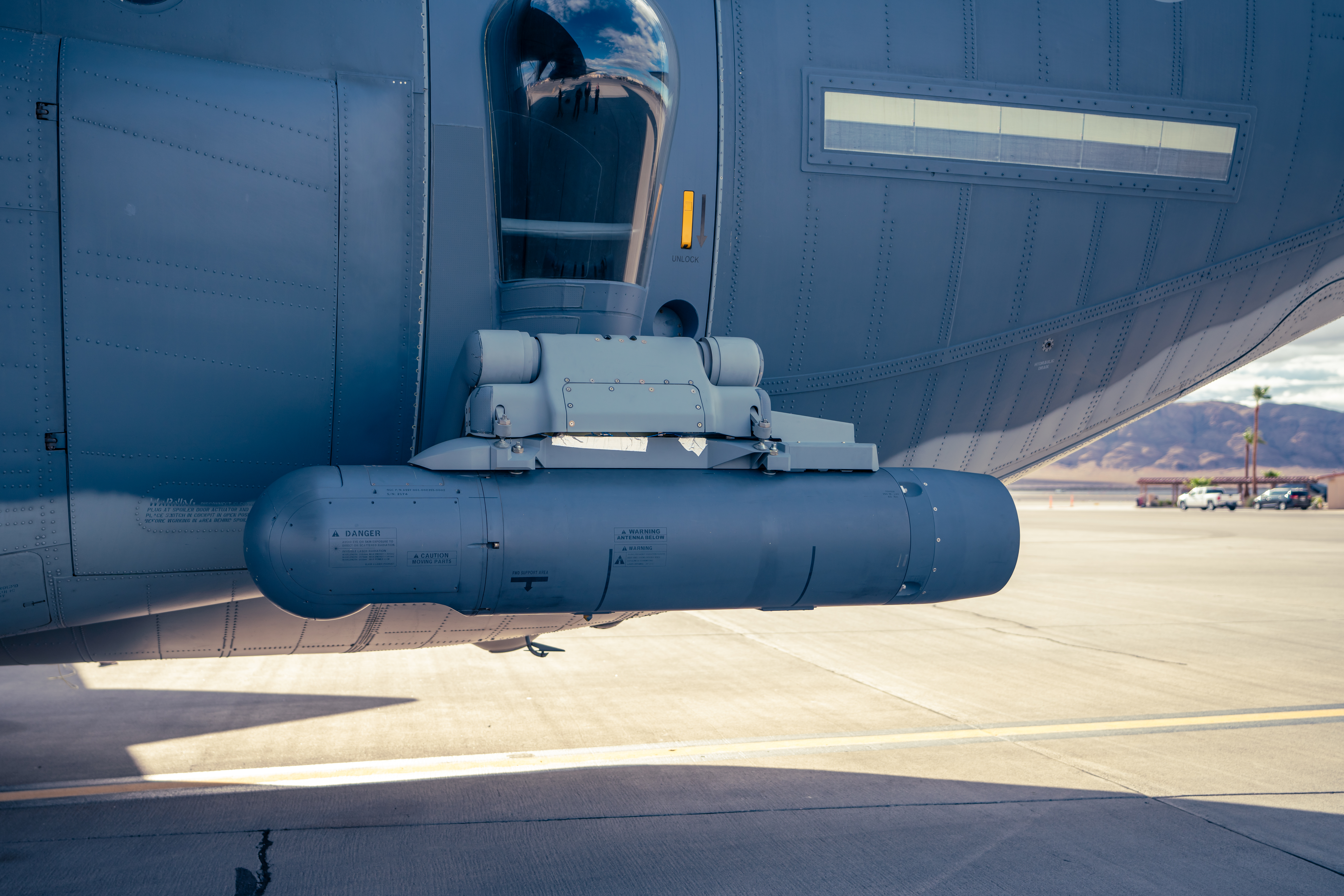
The search and rescue (SAR) process begins with an incident that isolates individuals to the point they cannot self-recover. Such an incident could be a downed aircraft, an injured individual (such as a hiker or hunter), or a natural disaster. Visual and electronic means are needed to locate these individuals and bring them to safety. The Georgia Tech Research Institute (GTRI) is working to improve those capabilities for the Air Force.
The Multi-Spectral Intelligence, Surveillance, and Reconnaissance (MISeR) program is one of those programs that is modernizing and enhancing the Air Force’s imaging equipment. By attaching an electro-optical infrared sensor system from Northrop Grumman to Airdyne Aerospace’s Special Airborne Mission Installation & Response (SABIR) arm, the Air Force can better perform combat search and rescue (CSAR) missions. Furthermore, the MISeR program saves money for the government and taxpayers by leveraging existing technology and research.
Recently, the team reached a significant milestone by demonstrating the successful integration and operation of MISeR on board an HC-130J Combat King II. They are now working towards large-scale implementation to aid the Air Force’s CSAR missions.

Partnering to Modernize Imaging Equipment
The Air National Guard Air Force Reserve Command Test Center (AATC), which is sponsoring the MISeR program, frequently works with GTRI’s Air National Guard Program Office to develop actionable solutions that are tested and subsequently implemented.
“GTRI brings the ability to innovate and bring technology solutions to them [Air Reserve Component],” said Jo Eliot, senior research associate and director of the Air National Guard Program Office. “Industry has ideas, but we are the glue to get it on the aircraft and improve the mission.”
In 2020, AATC was looking to modernize its imaging equipment for the CSAR division. GTRI’s Air National Guard Program Office, a part of the Electronic Systems Laboratory (ELSYS), collaborated with industry partners, including Airdyne Aerospace and Northrop Grumman, to adapt previously developed technologies for the Air Force’s CSAR missions.
Rather than engineering entirely new technology, an opportunity was identified to adapt Northrop Grumman’s AN/AAQ-28(V) LITENING targeting pod. The pod, designed as an electro-optical infrared sensor system typically used to detect, acquire, identify, and track targets at long ranges, could be adjusted to support SAR missions.
“For the search and rescue, this could be used to locate survivors on the ground,” said Buzz Glover, GTRI senior research engineer, who serves as the GTRI MISeR task leader. “If you can use it to find a vehicle, why can’t you use it to find a person or downed aircraft?”
The first stage of this project involved an operational assessment to determine if the existing technology could be used. In order for MISeR to be successful, the LITENING pod needed to be quickly and easily attached to an aircraft, such as Lockheed Martin’s HC-130J. The team began working with Airdyne, a privately owned, highly focused aircraft special mission systems engineering, manufacturing, and aerospace research firm, to attach the pod. Airdyne’s SABIR system uses bolt-on avionics components to augment aircraft without requiring any permanent modifications.
The SABIR AS-7 STRUT is an articulated arm that can be mounted in the paratroop door of an HC-130J. The pod can then be easily affixed to the SABIR arm, and once the aircraft is airborne, the entire piece can be extended and retracted to facilitate the mission at hand.

“GTRI’s role was designing the integration and installation into the aircraft,” Glover said. “While Northrop Grumman and Airdyne have the technical expertise on their products, GTRI provided the expertise and experience to integrate these systems together and into the aircraft for flight testing.”
Pulling together the expertise of multiple organizations resulted in a technology that could positively impact the effectiveness of the Air Force’s CSAR missions.
“The technology MISeR provides and capability it brings to the table impacts and enhances every phase of both the CSAR and SAR processes,” said Lt. Col. Andy Williams, AATC CSAR Division director
Putting the Technology to the Test
Before any technology is implemented, it must be proven successful. Therefore in March 2021, the team utilized a roll-on/roll-off commercial off-the-shelf (COTS) solution to address the need for SAR/CSAR advancements where the LITENING pod and SABIR arm were integrated and tested.
COTS technologies translate to savings—both time and money. Utilizing and incorporating existing technologies from a solutions-based approach minimizes the constant need for research, development, test, and evaluation via already proven advancements. “It’s an 80 percent solution at 20 percent of the cost,” Lt. Col. Williams explained.
“It’s not always about the next big scientific breakthrough, but about solving problems,” Eliot said. “We want to save taxpayers’ dollars.”
While the team had already done extensive lab testing, they eagerly awaited the first test flight in Alaska. There were five scheduled test flights to verify the system was safe to fly on the aircraft. The tests began with straight flight paths. Once that proved successful, the pilots advanced the level of flight maneuvers and started running emergency procedures to ensure the new technology did not inhibit any capabilities.
After successfully completing the test flight in Alaska, the team traveled to Nellis Air Force Base in Nevada to test the technology at the United States Air Force Weapons School, which trains the world’s premier tactical experts. The MISeR program was tested during the CSAR mission period of Weapons School. After five additional test flights, the team concluded the testing phase of the project. The over-arching success at each level is now advancing the effort into phase three, which will involve a permanent or semi-permanent installation of the equipment.
Expanding Capabilities
Time is of the essence when conducting search and rescue missions, thus improving and expanding Air Force technology is of the utmost importance.
“MISeR is a game-changer in the CSAR and SAR realms,” said Lt. Col. Williams. “It expands the HC-130J’s capability, increases situational awareness among CSAR Task Force (CSAR-TF) assets, frees up time to allow those assets and persons to focus on the task at hand affecting the recovery, decreases the time the isolated person (IP) is in harm’s way, and provides a window into the SAR/CSAR world so ‘That others may live.’”
Moving forward with the installation, the team validated interoperability with supporting assets while conducting CSAR missions. The LITENING pod increased its visual capabilities by providing digital, high-definition video transmitted from the aircraft to Airborne Tactical Assault Kits (ATAK) worn by Special Warfare team members supporting the rescue operation. This real-time video provides them an eye-in-the-sky view of their objective, while also providing an unfiltered assessment of the area prior to infiltration/exfiltration.
“Having a very capable search and rescue system gives the warfighters peace of mind,” Glover said. “We will do everything to get them home to their families.”
MISeR serves as another tool in the CSAR toolbox. Combining efforts creates layers for mission effectiveness, all working toward minimizing the isolated person time on the ground. The team is also exploring how the National Guard could use this technology in Homeland Security and Emergency Response. There is an ongoing domestic mission in Alaska that involves aviation accident rescue on the state’s interior. Implementing the MISeR program could provide the National Guard with real-time video data link imagery to rescue personnel on the ground and back to command and control (C2) centers.
Working closely with sponsors and partners enables GTRI to more effectively serve national security and provide solutions to some of the nation’s most complex problems.
Glover and Eliot extend their gratitude to GTRI’s partners at Airdyne Aerospace and Northrop Grumman, who have been an integral part of the success of this project. The leadership at AATC has also been incredibly supportive during this whole process. GTRI thanks the Alaska Air National Guard and Lt. Col. Andy Williams from AATC for working with us and paving the way for testing in Alaska. And finally, we recognize the NGB/A5 group in the Washington D.C. office, which provided supplemental funding.
The MISeR program exemplifies the power of collaboration and how GTRI employees understand the value of applying existing principles and technologies when addressing emerging requirements. This effort is a glowing testament to the enduring relationship AATC shares with its industry partners, the successes that relationship has garnered, and the change it has accelerated for over 30 years.
Georgia Tech Research Institute (GTRI) is the nonprofit, applied research division of the Georgia Institute of Technology (Georgia Tech). Founded in 1934 as the Engineering Experiment Station, GTRI has grown to more than 2,700 employees supporting eight laboratories in over 20 locations around the country and performs more than $600 million of problem-solving research annually for government and industry. GTRI's renowned researchers combine science, engineering, economics, policy, and technical expertise to solve complex problems for the U.S. federal government, state, and industry. Learn more at https://www.gtri.gatech.edu/ and follow us on LinkedIn, Twitter, Facebook, and Instagram.
Writer: Katrina Heitz
Photographer: Taylor Cifuentes




